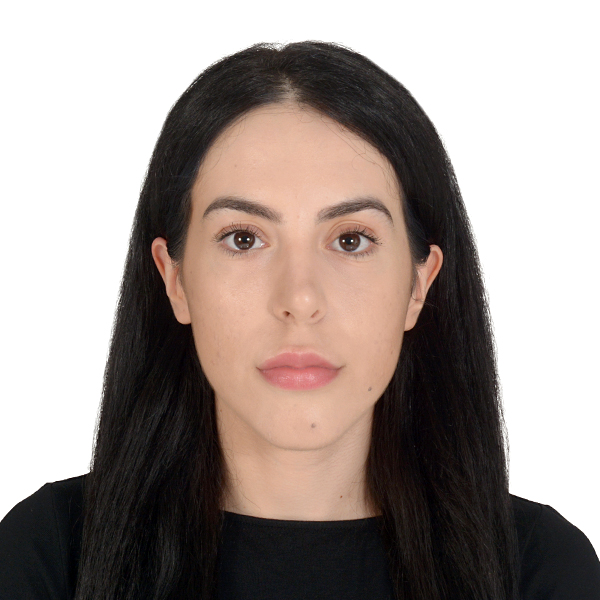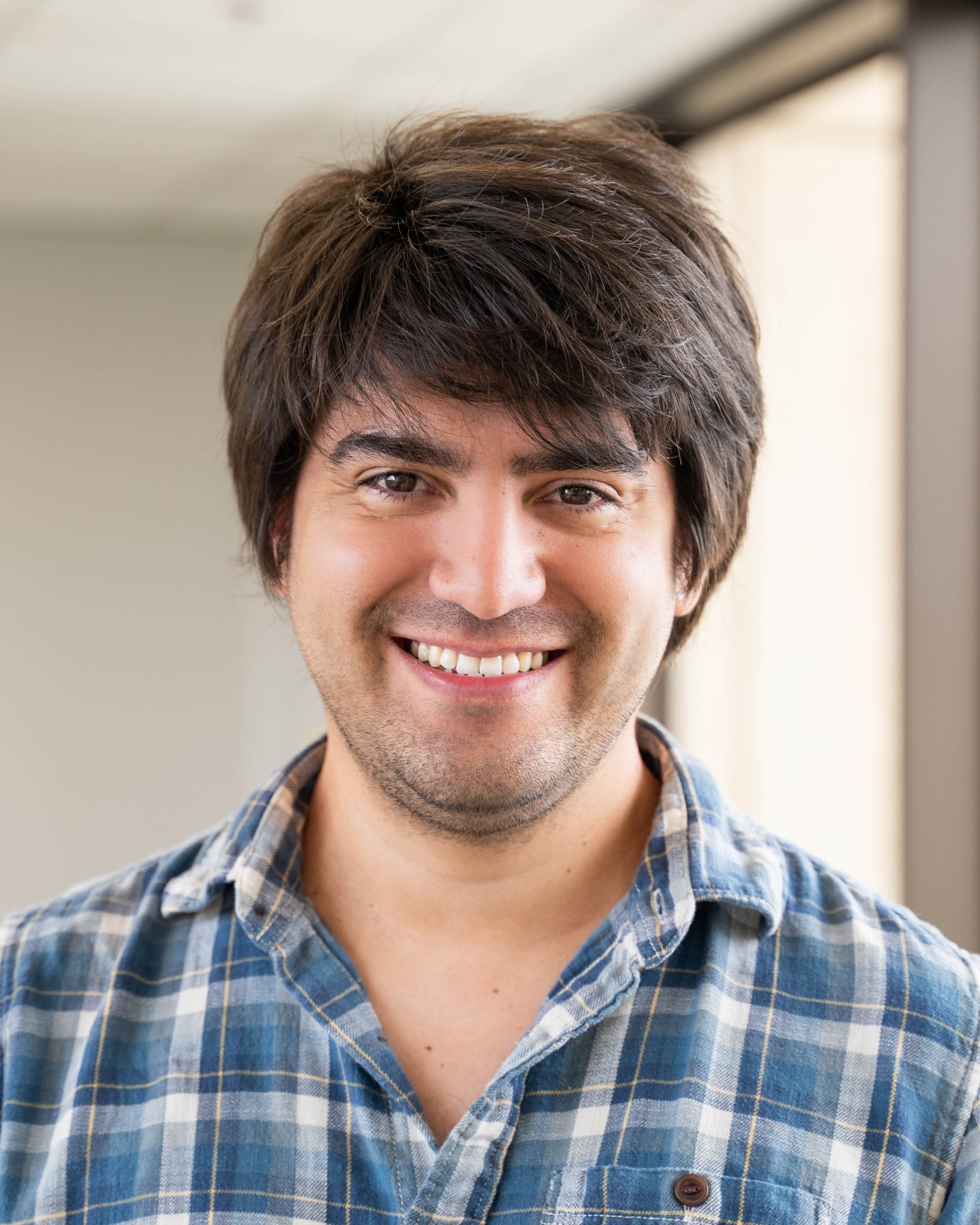Biomaterials
Biomaterials - Poster Sessions A & B
G5 - Conductive Polymer Coatings and Electrical Stimulation to Control Cell Growth and Neuron Differentiation on PEGDA Hydrogels.
Thursday, October 9, 2025
10:00 AM - 11:00 AM PDT
Location: Exhibit Hall F, G & H

despina kassiou
UMKC
kansas, Missouri, United States- JT
Jefferson Tran
UMKC
kansas city, Missouri, United States 
Nicolas Muzzio
University of Missouri-Kansas City
Kansas City, Missouri, United States
Presenting Author(s)
Co-Author(s)
Primary Investigator(s)
Introduction: : Nervous system injuries and diseases are leading causes of ill health and disability worldwide. As the nervous system presents a limited capacity for spontaneous regeneration and functional recovery after injury due to trauma or disease, developing new technologies and biomaterial scaffolds that promote neuronal regeneration is very appealing. Hydrogels are porous networks obtained by chemical or physical cross-linking of hydrophilic polymers. Poly (ethylene glycol) diacrylate (PEGDA) hydrogels are attractive for tissue engineering due to their tunable mechanical properties and biocompatibility. Furthermore, PEGDA photopolymerization allows the obtention of substrates with controlled topographical cues. However, PEGDA itself is bioinert and requires functionalization with extracellular matrix proteins such as collagen, laminin, or fibronectin (FN) to support neuronal cell attachment. Conductive polymers like poly(3,4-ethylenedioxythiophene) (PEDOT) and polypyrrole (PPy) have emerged as coatings to provide electrical cues in neural interfaces and other electrogenic tissues. Though it is known that conductive cues and electrical stimulation (ES) can modulate neuron growth and differentiation, the mechanisms are poorly understood. Here, we explore neurite outgrowth and differentiation of a rat dorsal root ganglion neuron hybrid line (ND7/23 cells) on flat and micro-grooved patterned PEGDA hydrogels functionalized with FN or biomimetic synthesized conductive polypyrrole-poly(3,4-ethylenedioxythiophene) copolymer doped with poly(styrenesulfonate) (PPy–PEDOT:PSS). We also study how different electrical stimulation conditions affect cells’ viability and differentiation. We aim to shed light on how biochemical, physical, and topographical cues interplay to modulate cell behavior and improve the design of materials interfacing with neurons for tissue engineering.
Materials and
Methods: : -PSS was obtained via Reverse Addition–Fragmentation Chain-Transfer (RAFT) polymerization. PPy–PEDOT:PSS was obtained by biomimetic synthesis using hematin as a catalyst.
-PEGDA hydrogels were obtained on eosin-coated glass coverslips via photopolymerization. Micro-grooved patterned hydrogels were obtained using a quartz photomask.
-PEGDA hydrogels were functionalized with FN, by covalently binding using a hetero-bifunctional crosslinker, or PPy–PEDOT:PSS, by physical adsorption.
-Functionalized hydrogels were UV-sterilized for one hour before cell seeding. ND7/23 cells were used as a model of dorsal root ganglion cells. Eventually, C2C12 myoblasts were seeded as a cell model of another electrically excitable tissue. Complete media containing 10% fetal bovine serum (FBS) was used.
-To induce neuronal differentiation, a subset of cultures was switched to differentiation media containing low-serum (0.5% FBS) with nerve growth factor (NGF) and dibutyryl cyclic AMP (cAMP). Direct electrical stimulation was applied to certain groups at various parameters (amplitude, pulse width, frequency).
-Cultures were maintained for up to 5 days, with cell morphology and neurite outgrowth assessed by confocal microscopy (β-III tubulin and actin cytoskeletal staining) and Image J analysis.
Results, Conclusions, and Discussions:: Results and
Discussion: Substrate topography and coatings strongly influenced cell adhesion and morphology. On micro-grooved PEGDA substrates, C2C12 myoblasts exhibited elongated morphologies and pronounced alignment along 2–4 μm grooves (Figure 1a-b). This alignment was less pronounced on larger grooves, and minimal on flat surfaces. ND7/23 cells showed poor attachment and few cells that adhered had random orientation (Figure 1a). However, primary rat dorsal root ganglion neurons readily adhered and aligned on microgrooved substrates, indicating a highly cell-specific response.
ND7/23 seeded on PEGDA hydrogels functionalized with FN or PPy–PEDOT:PSS and incubated for 4 days with 10% FBS-supplemented media were able to proliferate and reach confluency (Figure 1c). Under differentiation conditions (media with 0.5% FBS, NGF, and cAMP), ND7/23 cell density remained low, and cells started developing short neurites and axons, indicating differentiation. Cells seeded on PPy–PEDOT:PSS exhibited enhanced differentiation, with a higher percentage of cells in more advanced differentiation stages. When cultured in low-serum (0.5% FBS) without neurotrophic factors, ND7/23 cells on FN-coated hydrogels continued proliferating, reaching high confluency. Interestingly, cells on PPy–PEDOT:PSS coatings under the same conditions proliferated more slowly and displayed numerous dendrites and axons (Figure 1c). This suggests the conductive coating may promote early ND7/23 differentiation even without NGF or cAMP, consequently limiting proliferation.
ES further influenced cell viability and differentiation. High-voltage, prolonged ES induced significant cell death within 2–3 days, while lower-voltage protocols enhanced neurite growth without observable toxicity. The combination of conductive PPy–PEDOT:PSS coating with NGF, cAMP, and optimal ES parameters produced the most pronounced neurite outgrowth. Conversely, FN-coated hydrogels supported higher cell densities but less extensive neuronal differentiation.
Conclusion:
These results demonstrate that integrating conductive polymer coatings and electrical stimulation with neurotrophic factors significantly enhances ND7/23 neuronal differentiation. While FN-coated hydrogels support higher cell densities, conductive PPy–PEDOT:PSS coatings combined with NGF, cAMP, and ES achieve superior neurite extension. Though more research is needed to shed light on the interactions between cells and PPy–PEDOT:PSS, this work highlights the potential of conducting polymers for interfacing with nervous and other electrically excitable tissues.
Acknowledgements and/or References (Optional)::
